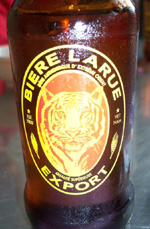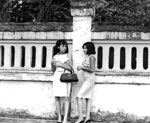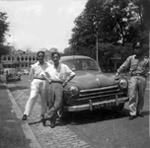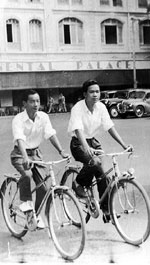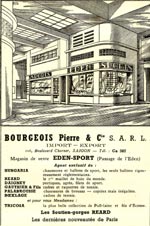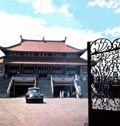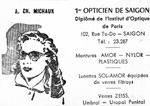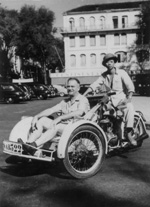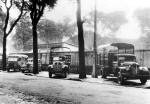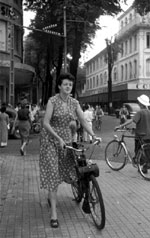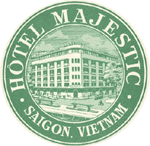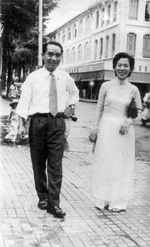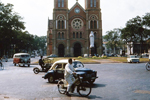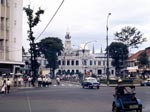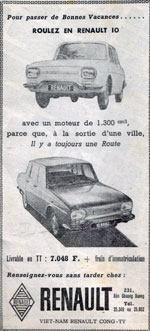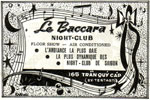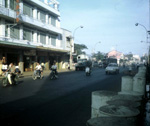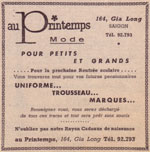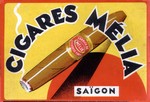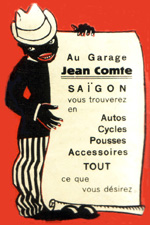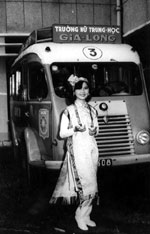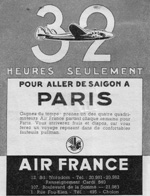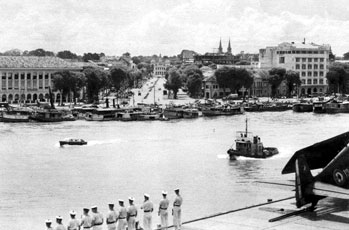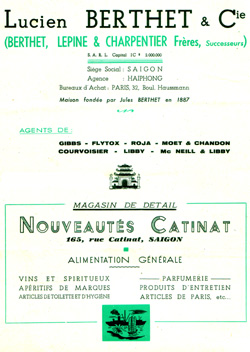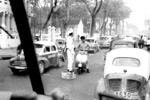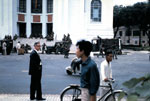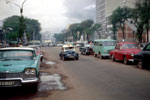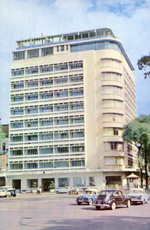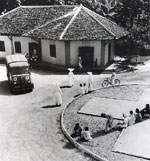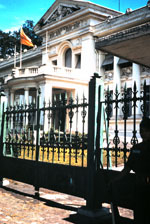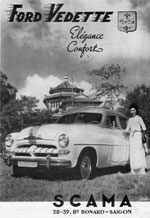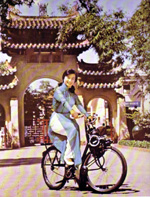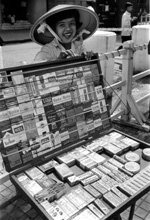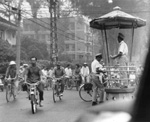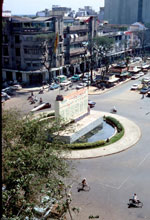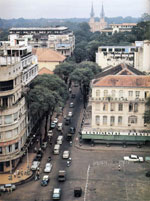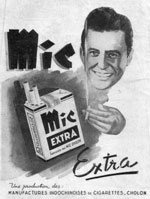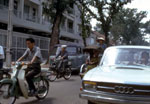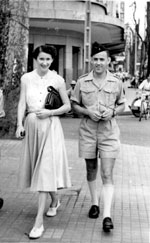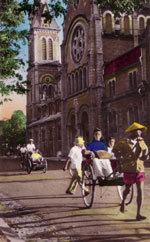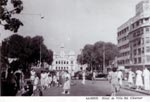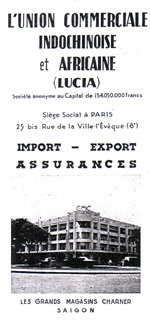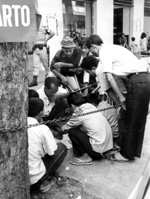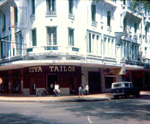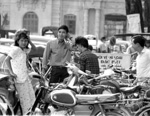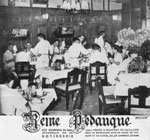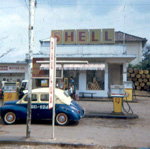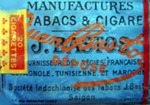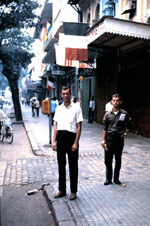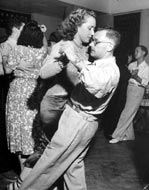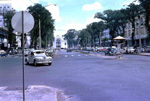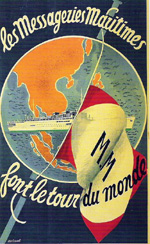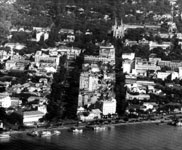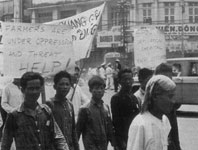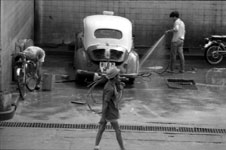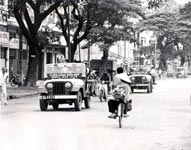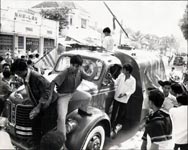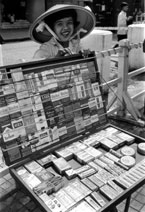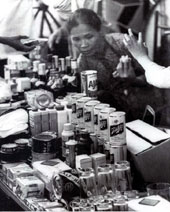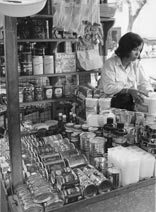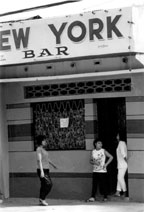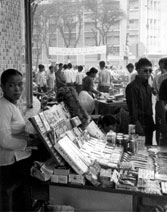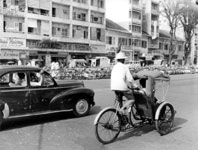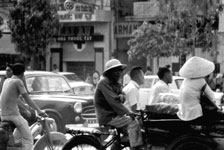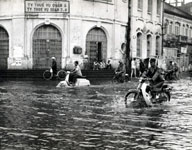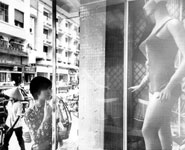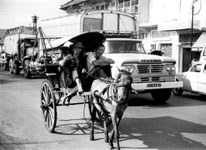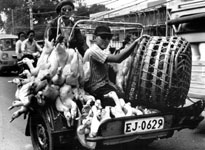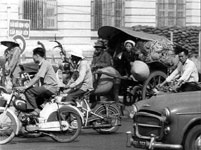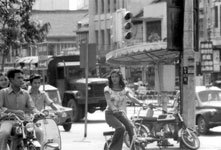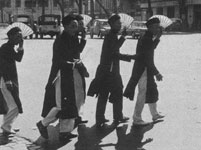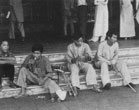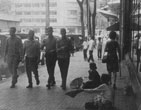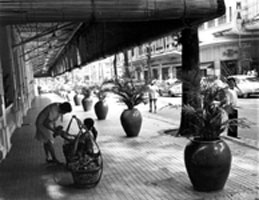
SAIGON DURING THE WAR
by Fernand Gigon
WORLD KNOWLEDGE
(CONNAISSANCE DU MONDE)
![]()
The article presented below was published in the monthly “Connaissance du Monde” (World Knowledge) No. 111, February 1968.
Fernand Gigon describes the atmosphere of the war in Saigon in the bars and the streets. In these lines he evokes with a precise, objective, incisive pen, in a series of vignettes, captivating in their sobriety, the hard daily life of the residents of Saigon – a city on overload, where any provocation could start a riot, where the occupier is hated and exploited, and where a moral decadence on all levels reigns, brought about by the terrible conditions of a war without end.
Fernand Gigon, a Swiss journalist, worked for dozens of newspapers all over the world. He traveled to the Far East, brought back books, articles, photos, and radio reports. He was one of the first journalists to visit Communist China in 1956. After his travels in Africa (Guinea), he returned to China in 1961 and shot documentaries for the American network NBC. In 1968 he became the independent Swiss witness to the Vietnam conflict. His archives (his writings and over 20,000 photographs) were donated by his widow to the County Library of the Jura in Porrentruy.
Aerial view of Saigon in 1968
In Saigon, History can be read in the streets. The capital dies and is reborn with each monsoon. With its flooded countryside and its sky at last purified, each season can sum up its successes and failures with a single formula: what’s new since last year?
In Saigon, History can be read in the streets. The capital dies and is reborn with each monsoon. With its flooded countryside and its sky at last purified, each season can sum up its successes and failures with a single formula: what’s new since last year? First and foremost, a general hatred toward Americans. Three, four, perhaps five percent of the population claim to be delighted with their presence. And the others? From the bar hostess to the secretary of a minister, by way of the rickshaw coolie and the administration typist, all, unanimously, revile the occupant and try to take advantage of him. At no time do they believe he’s fighting for them, for their “freedom to choose their way of life” as the made in U.S.A propaganda tells it.
A rickshaw driver, hearing me speak French, tapped me on the shoulder and pointed to a group of American soldiers standing on the sidewalk: “Not nice, Americans, only know how to bang-bang on Vietnamese”. And from his perch on the rickshaw’s saddle he imitated a G.I. firing his automatic rifle.
A bar girl explained to me: “Luckily they’re drunk when we go out with them: they don’t know what they’re doing”.
A highly-placed bureaucrat: “With our 5000 piasters per month, we’re just able not to starve to death: before the Americans, life was less expensive” ..."
All day long, the same complaints, borne of contempt and resentment. This hatred hasn’t yet changed to aggressiveness, but is real enough to make life miserable. Soldiers on leave from the base at Bien Hoa aren’t allowed to go to Saigon except in small groups.
A Vietnamese told me: “Whether one or two battalions arrive at the same time a fight breaks out: no one knows when or where it will stop”.
Any excuse, any provocation can cause bloodshed.
In the photo on the left a procession is forming in a city park. It’s made up of demonstrators belonging to the administration as well as the people and peasants. One can read protests against the poisoning of rice-paddies, against defoliation, and against the U.S. policies in Vietnam.
Sometimes a placard will appear in the business district. It says flat-out: “G.I. go home!”
As soon as an unseen hand places it there, the Vietnamese quickly clear away from it but there is always an informant to alert the police. Two officers arrive on bicycles, investigate in vain, and go make their report while hauling off the offending object.
Sometimes signs can be seen amongst demonstration processions. They read: “Stop the useless bombardments! Enough poison on our rice-paddies! Enough defoliation!” These signs, written in Vietnamese and English, carried by militant union members for instance, pass between two rows of plainclothes and uniformed police.
A procession is forming in a city park. It’s made up of demonstrators belonging to the administration as well as the people and peasants.
This long series of demonstrations always come down Tu Do Street (formerly Catinat Street) and then go down LĂŞ Loi Boulevard (formerly Bonnard Boulevard). They always stop in front of the American Information buildings and sometimes make a run on the U.S. embassy.
Impassible, the Marines watch them go by. It’s just that the safety of their rifle or machine-gun is off.
The government plays along with these demonstrations. It tolerates them as long as they have a request to make of the Americans or they exert pressure to make it rain dollars. The protestors use placards to make up for the weight of their discontent. But the general public, thinly scattered along the sidewalks letting the demonstrations flow by isn’t fooled. They know full well that the government is just utilizing the safety-valve. The government authorizes these anti-American demonstrations and uses them to allow malcontents to vent their complaints.
Street of Thieves (Thuc Khang)
In the photo on the left, taken by Fernand Gigon: At the center of Saigon, a street has changed name: it’s called the street of Thieves, or the PX Street. The “merchants” sell all the American products that were stolen during the unloading of American ships bringing in consumer products.
In the photo on the right, the shops of these merchants under tarps.
The posts symbolize authority, the market, denial. One lone Chinese, a speculator in rice and piasters, was dragged before the execution posts and shot in the course of a dramatic demonstration of bad justice. The protests following this sentencing were so violent that today, fraudsters risk only jail time and fines.
As for the Black Market Street, it displays its stolen wares like a scantily-clad streetwalker displays her charms. On the sidewalks, little forts made of tin cans, bottles, packages and cardboard boxes face each other. Most of the products have American labels, except for the watches, which are Swiss, the Cognacs, which are French, and the transistor radios which are Japanese. Here lands the merchandise stolen from the port or bought from the G.I.’s.
At dawn – the Vietnamese is an early-riser – and until 8 pm by the light of storm-lanterns, a crowd of squealing merchants and bright-eyed children set up on the sidewalk and sell products stolen from the port but destined to the American army. Bottles of whisky at 600 piasters remain the stars of this immense black market through which pass and pass again the patrols of Vietnamese agents, clad in white, and completely indifferent to the indecency of this traffic.
A Frenchman who was expecting a delivery of pharmaceutical products told me with resignation:
"I just learned from one of my employees that no trace is to be found of my imports, either in the port or at Customs. However, I have proof that they were offloaded from the ship. All I can do now is to offer a reward for the return of my property. Every business in Saigon knows this humiliation. Entire truckloads of merchandise disappear. They arrive at the docks empty. Coolies load them under the eye of the Customs Agents and the police, but they never reach their destination. Except if large bribes are paid to intermediaries. Some say these sudden disappearances are the work of the Viet-Cong. If that is true, one must conclude that the structure of the entire country is gangrenous, rotten to the bone".
Any observant person can watch this happen. All in all, the Thieves’ Market is a replica of the American PX, the store where US soldiers can buy consumer goods at a much reduced price. About 800 yards separate the PX and the Market. Along this route one passes brawny G. I.s with armloads of packages. The leave the Army stores loaded down with whisky, cigarettes, pharmaceuticals, socks, or tubes of toothpaste.
These girls, armed with fake buttocks and fake breasts made in Hong-Kong, immediately soak up the superprofits generated by the soldiers in this little traffic.
Occasionally, in this street overloaded with merchandise, M.P.s (military police) pass Vietnamese police officers. They don’t look at each other; they don’t see each other, so busy are they ogling bottles of champagne at 800 piasters, bottles of perfume, and canned goods.
The municipal street cleaners of Saigon, when they pass their brooms through the gutters of the market also squint at the bottles. But their temptation doesn’t go far because, as the good Vietnamese that they are, they know all about the mysteries of math. They can immediately see that their monthly salary wouldn’t even be enough to pay for a bottle of whisky and a bottle of champagne. The result?
Saigon has never been so dirty.
The street-sweepers allow piles of vegetables and fruit to pile up on the sidewalks and stink up the atmosphere. Worms and insects are crawling all over. The explanation for this neglect is simple: the street-sweepers are conscripted into the South-Vietnamese army and those who remain don’t even earn enough in a month to spend a night in an air-conditioned room in one of the capital’s palaces.
Piles of rotting garbage rise up everywhere. Rats scurry about and dig tunnels through these nauseating heaps.
Even the monsoon, despite its violence, is unable to flush out this trash.
This filth, thrown in bulk into the streets of Saigon, is a perfect symbol. The entire country is progressively sinking into an unprecedented moral decline.
The decay of Vietnam has reached every one of its organs. Extortion, preferential treatment, entitlements purchased to the detriment of justice, would make up a complete catalog of human baseness. Taken at random from this list, here are a few samples: a thousand U.S. dollars to obtain a passport with exit visa; clandestine purchases of villas in Spain and apartments in France; a million dollars smuggled out of the country in ten months by the big shots of the country and converted to foreign investment; intensive recruiting of young country-girls destined to the amusement of the troops; the opening of two hundred special houses or more exactly special apartments where the story of Sodom and Gomorrah was relived.
Rarely has a war produced so much vice in so little time. The American churches are worried and send investigation and virtue squads to this center of immorality.
The Vietnamese themselves, in their complaints to the authorities, speak of this problem. As the war ramps up, so does decadence.
Saigon has become “the biggest whorehouse in the world”, as an American senator would say.
The use of psychology
The conclusions of this commission are truly astounding: they tend to prove that the nha-qués of South Vietnam are not unhappy, that they hold no grudge against the Americans because, says the report, “They understand why, in our fight against the communist aggressors, we must use all means of destruction at our disposal”. In their hopeless quest for justification, these specialists forget perhaps that Asians as polite as the Vietnamese will never say a word, or a sentence which might displease, especially in dealing with these American “big noses”, distributors of rice, medicine and huts.
As the fighting increases, so do the numbers of mutilated and crippled. They can be seen in the street, dragging their stumps of limbs half consumed by napalm, or limping along on crutches.
Sometimes they go out in groups and sit on the steps of a movie theater to watch the astounding procession of Saigon residents. They only stay in hospital a minimum of time as each day brings a new wave of wounded, military or civilian.
To load a boat in the river of Saigon which serves as a port for the capital takes at least a week. The docks are so crowded with merchandise that trucks can no longer clear them, which allows permanent thievery, an unbelievable pillage.
Rackets flourish. Priority goes to ships which bring munitions and weapons to Saigon. They take up the entire usable length of the unloading docks. The ships that bring in food or raw materials, for example, so necessary for the country, drop anchor in the middle of the river and their cargo is unloaded in slow-motion: crate by crate onto minuscule sampans which escape both the scrutiny of Customs and the police. To complicate matters, the Viet Cong often blows up barges in the middle of the river and blocks all movement for several days.
More and more often, South Vietnamese villages are blindly attacked by American air power which hopes to dislodge Viet Cong partisans in this manner. General Westmoreland, in a recent report, spoke of four hundred sixty erroneous attacks. As soon as the U.S. aircraft have returned to their bases, the village elders get their black tunics out of their sandalwood chests, don them, and head off to Saigon to demand restitution from the American authorities. Their appearance in a capital devoted to commerce and war always creates a bit of a stir. It’s a bit of the past appearing in the century of iron and fire.
Construction and barricades
When a traveler arrives at Tan Son Nhut, the busiest airport in the world, a charming hostess asks him if he has reserved a room. If he has, half the time the room has been snatched by a pervious traveler who will have paid a bonus of 20 to 30 dollars to the concierge of an hotel to be assured of a place to stay the night.
If not, and if he’s lucky, he will end up in a miserable hotel better suited to raising cockroaches than to restful sleep. Same problem with apartments. This fact has not escaped the Vietnamese who build hotels like crazy that they qualify as palaces and apartments by renovating chicken coops. In two years the invested capital has to be recuperated, which caused a Chinese banker from Hong Kong to say that “Saigon is the one city in the world where a fortune could most quickly be made”.
A year ago, only the buildings occupied by Americans were protected by sandbags. Today, they’re everywhere. The members of government who fear rebel activity build barricades around their ministry; the Americans imitate them and surround their utility installations and especially their power plants with a veritable wall of protection. Terrorism reigns over the city and a weak spot in the protection immediately translates into a grenade attack.
The refugees: in South Vietnam, a million people live far from their village and their fields. Napalm, BZ7 gas, chemical defoliants, and B52 attacks ran them off of their lands. Poor and destitute, among the most miserable, they live on the outskirts of cities or hamlets reconstructed for their use. Without organization, without hygiene, they easily become the victims and the target of illness.
According to the vaguest estimates, 70% of the population is Buddhist. This figure needs to be explained. In all of Asia, no country practices Buddhism as little as Vietnam, but no country feels its influence more. It’s on the spirits, much more than on the souls, that Buddhist hierarchy exerts its influence. It is present in all the villages and even the most remote ones lost in the rice paddies or in the mountains. It’s enough for one word of order to come from the “high venerables” for it to spread immediately everywhere.
In Vietnam, Buddhism has come out of the pagodas and out into the streets.
The escalation builds. The village elders come to demand restitution, the number of disabled increases; before the beggars, passers-by shut their eyes.
Text and photos by Fernand Gigon.

